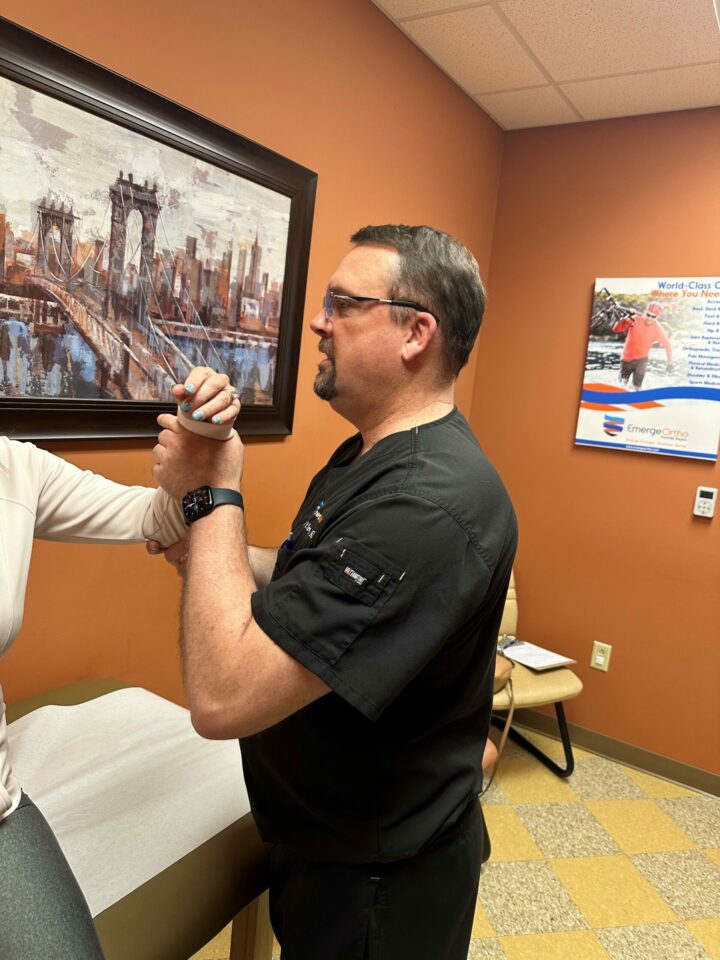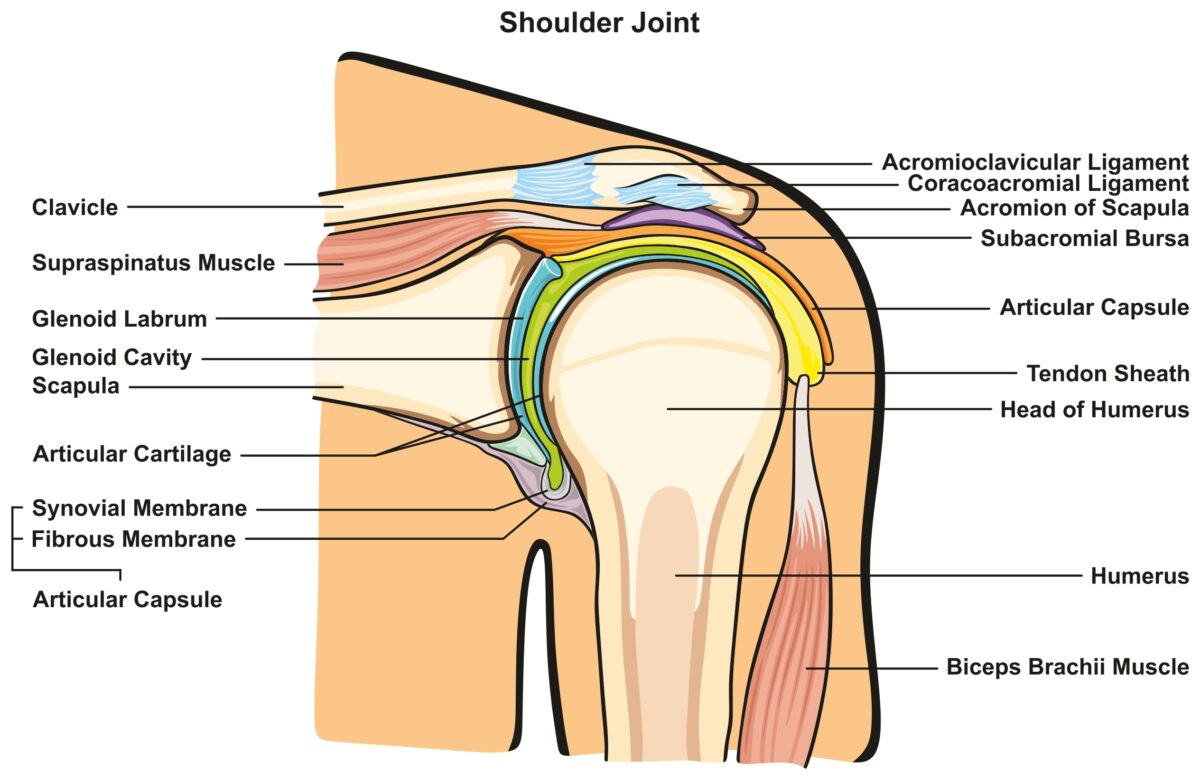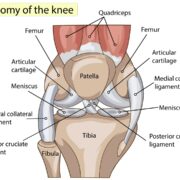
If you have felt an uncomfortable sensation in your shoulder joint, as if it were slipping out of place, you might have suffered a shoulder subluxation. It is a common shoulder injury, especially (though not exclusively) among younger people during sporting activities, and among older people who fall from a standing height.
Shoulder subluxations are often mistaken for shoulder dislocations. The two conditions are distinctly different, but both are uncomfortable, painful, and require expert medical attention.
At EmergeOrtho—Foothills Region, our patients often ask about the difference between a shoulder subluxation and a shoulder dislocation. Most importantly, however, they want to know how to treat their injury so they can get back to their normal activities as soon as possible.
Keep reading for information about the subluxation vs dislocation difference, how shoulder subluxation happens in the first place, and what treating it effectively involves.
What Is a Shoulder Subluxation?
To understand shoulder subluxation, let us review your arm’s anatomy.
Your arm contains three bones. The radius and the ulna are the two forearm bones. The humerus is the upper arm bone, stretching from your elbow and shoulder.
The ball at the top of the humerus (the humeral head) is part of your shoulder joint. It is covered by the rotator cuff tendons, which help you lift and rotate your arm. The humeral head rests in a shallow socket in the shoulder blade (the scapula), called the glenoid fossa.
Because the head is usually larger than the glenoid fossa, it is supported by three ligaments called the glenohumeral ligaments. This ball-and-socket arrangement is known as the glenohumeral joint. It is one of four joints in the shoulder complex.
A shoulder subluxation is a type of shoulder instability that occurs when the humeral head partially slips out of the shoulder socket. This uncomfortable and often painful injury can make everyday activities more difficult and lead to further damage if not treated properly.
 What Is the Subluxation vs Dislocation Difference?
What Is the Subluxation vs Dislocation Difference?
People often mistake a subluxation for a dislocated joint, and vice versa. But in a subluxation, the humeral head does not completely pop out of the shoulder socket. In a dislocation, the head and socket are completely separated.
Subluxations—which are in essence partial shoulder dislocations—are generally considered less severe than complete dislocations. Unlike shoulder dislocations, shoulder subluxations do not require immediate medical attention—though you should consult an orthopedic professional as soon as possible—and can often be treated nonsurgically.
Whether or not you think you have completely dislocated your shoulder joint, if you are experiencing the symptoms we will discuss next, you should seek medical attention to prevent further injury to or instability of the joint. Diagnosis through such imaging tests as X-rays or MRIs will confirm the nature and extent of your injury.
What Are the Symptoms of Subluxation?
Symptoms of shoulder subluxation range from mild to severe. They can include:
- Shoulder pain
- Tenderness
- Numbness, tingling, or weakness in your arm
- Swelling and bruising
- Popping or clicking sounds
- A grinding feeling when you move your shoulder, or feeling it “gives way”
- Limited range of movement in your shoulder
If you are experiencing any of these symptoms, seek medical attention right away for proper diagnosis and treatment.
How Does Shoulder Subluxation Happen?
Weak rotator cuff muscles, a rotator cuff injury, or loose glenohumeral ligaments generally cause subluxations. Overuse and repetitive movements can also cause them.
Common athletic injuries leading to shoulder subluxation include falling on an outstretched arm, throwing a ball, and taking a direct blow to the shoulder during such contact sports as football and rugby.
It is important for athletes to take precautions to prevent subluxations from occurring—wearing the right protective gear, using proper throwing techniques, and following exercise regimens that help maintain strong and stable shoulders.
What Are Common Complications of Shoulder Subluxation?
Although shoulder subluxations often heal without major complications, it is important to be aware of possible risks associated with the injury. Without proper treatment, subluxations can lead to further instability and discomfort in the joint. In some cases, they can also cause chronic pain or impair mobility.
What Are the Treatments for Subluxation?
Shoulder subluxations are usually treated with a combination of rest and physical therapy. Physical therapists can treat shoulder subluxation using such exercises as stretching, strengthening, and flexibility training to heal the shoulder joint and strengthen its supporting muscles.
In some cases, immobilization with a sling or brace may be necessary to give the shoulder joint adequate rest and protect it from further damage. Doctors may also prescribe pain medications, such as nonsteroidal anti-inflammatory drugs (NSAIDs).
In more severe cases, if the treatment physical therapists prescribe does not prove effective, a doctor may recommend surgery. Surgery is usually arthroscopic—inserting small tools into the joint through tiny incisions. The goal of surgical management is to restore shoulder stability and normal function of the injured joint by tightening or repairing damaged ligaments or tendons. The procedure is known as a closed reduction.
The time it takes to recover from a closed reduction and resume your daily activities will vary depending on the type and severity of injury. Full recovery can take months or years.
EmergeOrtho—Foothills Region is committed to developing specifically tailored treatment plans for your shoulder injury to help you get back to your active lifestyle. To make your appointment, call us at (828) 672-1299 or request an appointment.







